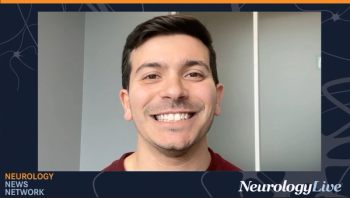
Phase 2 OPAL Study to Test Muscle-Targeting Therapy Apitegromab in Infants With SMA
Key Takeaways
- OPAL trial explores apitegromab in infants under 2 with SMA, following promising results in older cohorts from SAPPHIRE and TOPAZ trials.
- Apitegromab targets myostatin to enhance motor function, with previous trials showing significant improvements in motor scales.
Apitegromab, an invesigational muscle-targeting treatment, showed promising results in improving motor function among young patients with SMA in a phase 2 trial.
At the
Apitegromab, a muscle-targeting treatment, has been previously studied in the phase 3 SAPPHIRE trial (NCT05156320) and phase 2 TOPAZ trial (NCT03921528), which included patients with SMA aged 2-21 years. SAPPHIRE’s main efficacy cohort included those aged 2-12 while TOPAZ comprised patients across 2-21, stratifying them by ambulatory status.
OPAL, a recently initiated trial, is expected to include 52 patients with 5q SMA aged less than 2 years who will be randomly assigned 1:1 to either apitegromab 0.75 or 7.5 mg/kg by intravenous infusion every 4 weeks. The study spans a total of 52 weeks, including a 4-week screening period, followed by a 48-week treatment period (12 doses), and a 20-week safety follow-up for patients who decide not to enter the extension study.
Led by a team of neuromuscular experts, including Laurent Servais, MD, PhD, a professor of pediatric neuromuscular diseases at the University of Oxford, the trial includes infants with SMA who have Children's Hospital of Philadelphia Infant Test of Neuromuscular Disorders (CHOP-INTEND) score of less than 55. To be eligible, patients must have a confirmed diagnosis of 5q autosomal recessive SMA, a confirmed presence of SMN2 gene copy(ies), and have body weight no less than 1st percentile based on the WHO Child Growth Standards at the screening visit.
Apitegromab is a fully human monoclonal antibody that selectively binds to the pro- and latent forms of myostatin, rather than the mature active form. Recently, the
Scholar Rock still plans to resubmit its biologics license application later this year after the FDA confirms remediation of the manufacturing findings, anticipating that the agency will review the application once those issues are resolved. The drug’s application was supported by data from SAPPHIRE and TOPAZ, two large-scale trials in which apitegromab met its primary end point in both instances.
Key exclusion criteria for OPAL includes unstable nutritional status or reliance on a gastric feeding tube for most feeds, as well as major orthopedic issues such as severe scoliosis, contractures, or recent spine or hip surgery that could interfere with motor assessments. Participants with other physical limitations, such as the need for casting, that would prevent consistent motor function evaluation during the study are also excluded.
READ MORE:
Similar to SAPPHIRE, OPAL includes patients who’ve received survival motor neuron (SMN)-targeted treatment, either nusinersen or risdiplam. SAPPHIRE, a study of 188 patients with SMA, was different from OPAL in that it did not all those who’ve received gene therapy with delandistrogene moxeparvovec (Elevidys; Sarepta). In SAPPHIRE,
In the SAPPHIRE trial, patients aged 2 to 21 years who received apitegromab at 10 or 20 mg/kg (n = 106) showed a mean 1.8-point improvement on the HFMSE compared with placebo (n = 50; P = .019). Those treated with 20 mg/kg demonstrated a 1.4-point mean difference versus placebo (P = .11). Across subgroups by age, SMN-targeted therapy type, treatment timing, and region, apitegromab produced consistent, clinically meaningful gains in motor function.
Among patients aged 2 to 12 years, 30.4% achieved at least a 3-point and 19.6% achieved at least a 4-point HFMSE improvement, compared with 12.5% and 6.3% of placebo recipients, respectively. Additional benefits were observed in RULM scores and WHO motor development milestones, supporting broader functional improvements with apitegromab.
The NeurologyLive team has been following the apitegromab story for several years, throughout the agent’s early development. In 2021, Yung Chyung, MD, chief medical officer at Scholar Rock, sat down to discuss the treatment’s mechanism, and the palpable buzz surrounding the drug and its clinical pathway.
REFERENCES
1. Capocelli K, Servais L, Crawford T, et al. Trial design and rationale for OPAL, a phase 2, randomized, double-blind study of apitegromab in patients aged <2 with SMA. Presented at: 2025 CNS Annual Meeting; October 8-11; Charlotte, NC. Abstract 311.
2. FDA issues complete response letter (CRL) for apitegromab as a treatment for patients with spinal muscular atrophy (SMA) solely related to observations identified at Catalent Indiana LLC fill-finish facility. News release. Scholar Rock. October 14, 2025. Accessed September 23, 2025. https://investors.scholarrock.com/news-releases/news-release-details/fda-issues-complete-response-letter-crl-apitegromab-treatment
3. Pivotal SAPPHIRE Trial Data Published in The Lancet Neurology: Apitegromab Demonstrated Significant Motor Function Gains for Children and Adults with SMA on SMN-Targeted Treatment. News Release. Scholar Rock. Published August 14, 2025. Accessed October 14, 2025. https://investors.scholarrock.com/news-releases/news-release-details/pivotal-sapphire-trial-data-published-lancet-neurology
Newsletter
Keep your finger on the pulse of neurology—subscribe to NeurologyLive for expert interviews, new data, and breakthrough treatment updates.



































